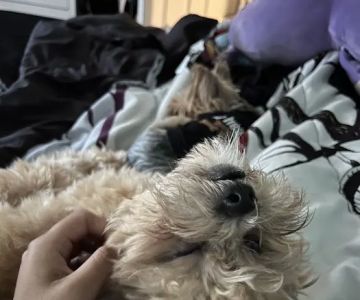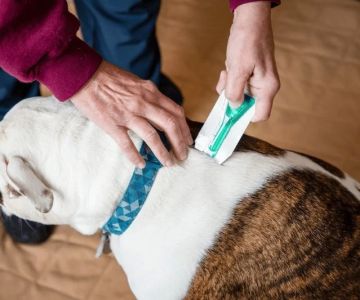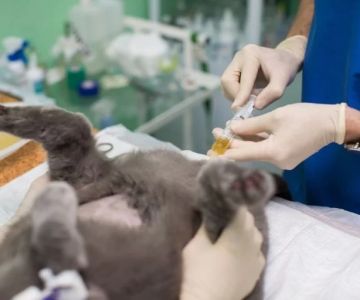How to Train a Puppy Not to Bite
Training a puppy not to bite can be one of the most challenging aspects of raising a new dog. I remember when I first brought home my puppy, Max, and he was constantly nipping and biting everything in sight. It was cute at first, but soon it became clear that I needed to teach him better habits, especially as his teeth grew sharper. Through trial, error, and a lot of patience, I’ve learned some key strategies to curb puppy biting, and in this article, I’ll share what worked best for me. If you’re dealing with a puppy that just can’t stop biting, read on for tips that will help you train your puppy to stop nipping and biting.
1. Understand Why Puppies Bite
The first step in solving any puppy problem is understanding why it happens in the first place. Biting is actually a completely natural behavior for puppies. When puppies are young, they explore the world with their mouths, just like human babies do. It’s also how they communicate with their littermates and learn about their environment. However, as they grow older, they need to be taught that biting isn’t acceptable behavior, especially when it involves humans.
Puppies may also bite out of excitement or frustration. Max, for instance, would often bite when he was playing and got too worked up. Other times, it was his way of getting attention, especially if I was distracted. Understanding the root cause of the biting helped me figure out how to address it effectively. It’s important to remember that it’s a phase, but you do need to intervene early to prevent it from becoming a habit.
2. Use the "Yelp" Method to Mimic Other Puppies
One of the first techniques I tried was mimicking what other puppies do when they get too rough during play. In the wild, puppies often yelp or let out a small cry when they bite too hard. This signals to the other puppy that the bite was too much, and it often leads to the biting puppy stopping the behavior. I decided to give this method a shot with Max.
Whenever Max bit me, I would let out a high-pitched “yelp” followed by a firm “no.” At first, Max was confused, but eventually, he started to understand that his teeth on my skin hurt me. Over time, he began to soften his bites, and it helped him realize that biting wasn’t a game or something he could do without consequences. This method worked well for Max, especially when combined with some additional training techniques.
3. Redirect to Toys or Chew Items
Another important tip that helped me with Max was redirecting his biting onto appropriate objects. Puppies often bite because they are teething and need something to chew on. Rather than punishing him when he bit, I made sure to always have chew toys on hand. I kept a variety of toys, such as rubber bones, squeaky toys, and rope toys, so Max had plenty of options for biting that were safe and satisfying for him.
When Max started biting my hands, I would immediately replace my hand with a chew toy. If he bit my fingers or sleeves, I would gently redirect him to his toy, saying “this is what you’re allowed to chew.” After several attempts, he began to understand that his toys were the acceptable objects for chewing, not my hands or clothes. It’s key to stay consistent with this method and always have toys nearby during playtime to ensure he knows what is and isn’t acceptable to bite.
4. Use Positive Reinforcement for Good Behavior
Positive reinforcement was another method that worked wonders for me. Puppies love attention and praise, and I quickly realized that rewarding Max for not biting was more effective than scolding him for doing so. Every time Max played without biting, I would reward him with treats and praise. “Good boy, Max!” was enough to get him to associate playing gently with a positive outcome.
It didn’t take long for him to understand that playing nicely meant getting treats, while biting meant losing the fun. Whenever Max got too excited and started to bite, I would pause the play and turn away from him, showing him that playtime would stop until he calmed down. When he stopped biting and started playing gently, I’d reward him. This method reinforced the positive behaviors I wanted to encourage and helped Max learn quickly.
5. Timeouts for Excessive Biting
Occasionally, Max would become so excited that no matter what I did, he wouldn’t stop biting. In these cases, I found that a “timeout” method was helpful. When Max’s biting got too excessive, I would calmly remove myself from the situation and place him in a designated “timeout” area (usually a playpen or his crate for a few minutes). I’d ensure that he wasn’t being punished, but simply given a chance to calm down and reset.
The timeout technique worked because it taught Max that if he became too rough, he would lose access to playtime and attention. Puppies need to learn that there are consequences for bad behavior, and a timeout gives them a break to rethink their actions without becoming overly frustrated. I also made sure to keep the timeout short—around 2-3 minutes—so that it was effective but not distressing.
6. Be Consistent and Patient
One of the most important things I’ve learned is the power of consistency. Training a puppy to stop biting is not something that will happen overnight. It takes time, patience, and a lot of repetition. Every time Max started to bite, I would follow the same steps: yelp, redirect to toys, and reward good behavior. Consistency in my reactions helped him learn the boundaries quickly, and he began to bite less and less as he grew older.
It’s important to be patient, too. Max didn’t stop biting after one or two attempts, but over the course of a few weeks, he improved significantly. I had to remind myself that he was just a puppy, and biting was a natural behavior for him. As he grew older and matured, he naturally stopped the biting behavior.
7. Know When to Seek Professional Help
There were moments when I felt like I had tried everything and Max was still biting too much. If you find that your puppy’s biting is persistent, aggressive, or not improving despite your best efforts, it might be time to consult a professional dog trainer. A trainer can offer personalized advice and may be able to address behavioral issues more effectively, especially if the biting becomes linked to other behavioral problems.
Remember, every puppy is different, and some may require more attention or specialized training. Don’t be discouraged if your puppy’s biting doesn’t improve immediately. With consistency, patience, and the right methods, you’ll be able to train your puppy not to bite and create a well-behaved dog.












